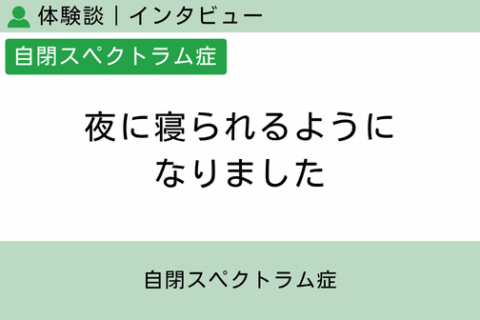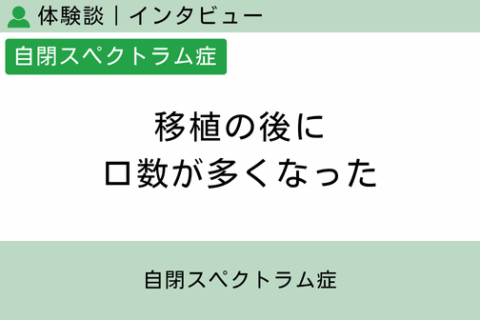Here you will find stories and interviews with patients and families who have undergone transplants. Due to differences in age and individual characteristics, the changes resulting from transplantation are also different. We are happy to share our families’ and individuals’ experiences and insights with the medical community. We believe that subjective records are very important. At the same time, we are working to objectively record changes, believing that the accumulation of verification that goes beyond personal impressions will pave the way to establishing this as a medical treatment.
Testimonials for ASD PatientHere is an illustrated story of a transplant experience at Luke’s Ashiya Clinic!
Naomi Hatanaka, who we interviewed this time, is a mother of three boys. Her oldest son was diagnosed with autism spectrum disorder (ASD), which prompted her to start a general incorporated association, Challenged LIFE. Currently, she is involved in various activities to create a society where people can live comfortable and energetic lives regardless of whether or not they have disabilities.
Introduction

Nice to meet you, I am Naomi Hatanaka.
We are a family of 5 with 3 sons (ages 10, 5, and 2) and our oldest son, age 10, has autism spectrum disorder characteristics.
Knowing that such problems for my eldest son might be reduced, he has now undergone an “intestinal flora transplant.
Here’s what the Hatanaka family has to say about their experience!
The testimonials will detail the process and details of the transplant.
Throughout the six transplants, we were surprised by the many changes.
Until the intestinal flora balance test
It took more than six months from the time I learned of the existence of the intestinal flora transplant until I actually decided on the transplant.
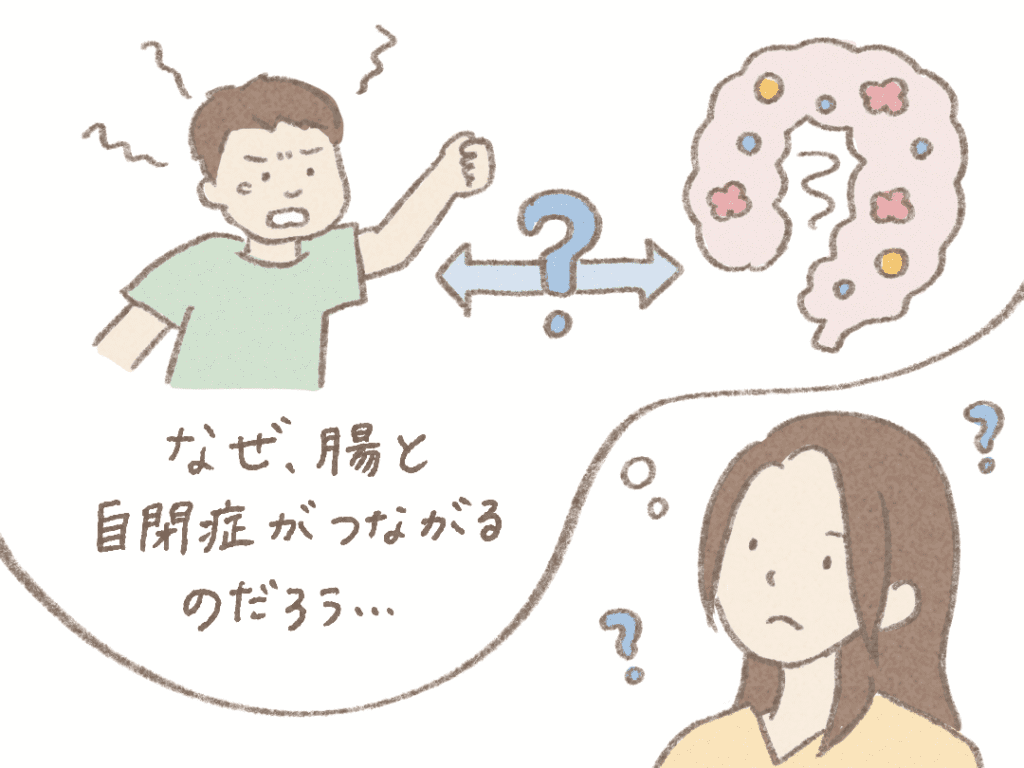
The reason was my own lack of knowledge about intestinal bacteria and flora.
‘Why the connection between the gut and autism?’ I wondered.
My heart was moved when I attended a seminar of the Intestinal Flora Transplantation Clinical Study Group and heard a story from the father of a daughter who had actually undergone a transplant.
The father had the following to say about the transplant.
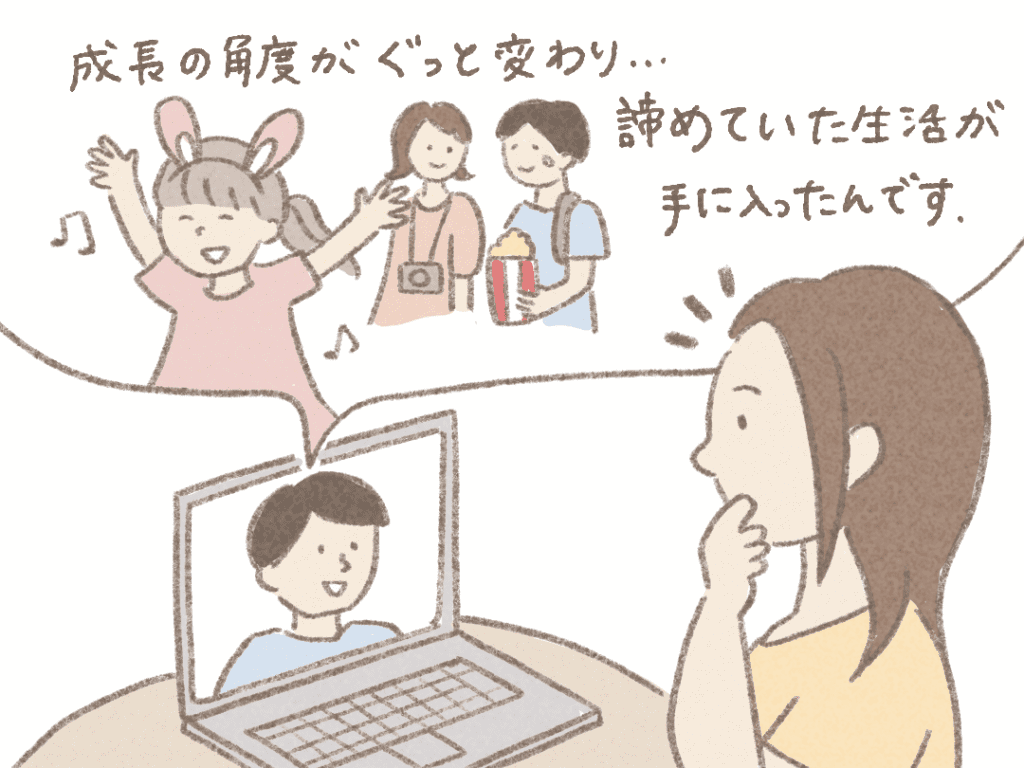
(Seminar Video) “My daughter had been growing little by little even before the transplant. But with the transplant, the angle of growth changed dramatically. I felt that it wasn’t so much that one thing had changed significantly, but that her whole life had changed.
Her daughter had the characteristics of sensory sensitivity, especially to sound.
He said he wanted to go to Disneyland, but had long given up on the idea of flying because of his condition, but after the transplant he was able to fly!
His father said he was impressed to see him flying without ear buds and even more so to see him having so much fun at Disneyland.
I was very impressed by the story of how the angle of growth was raised so much that he was able to obtain what he had given up as “impossible.

Looking back, I too often made assumptions about my eldest son’s potential, saying, “It’s impossible now.
For example, daily bath time limping, tantrums, mood swings, etc.
I think there were times when I set limits for my oldest son and unconsciously put him in a small box, thinking, “Even if he grows up, the same situation will continue for a long time.
This transplant may remove that assumption and open up possibilities for the eldest son or give him access to something he never envisioned.
It would also make life calmer and easier for the eldest son himself. That is what I have come to think.
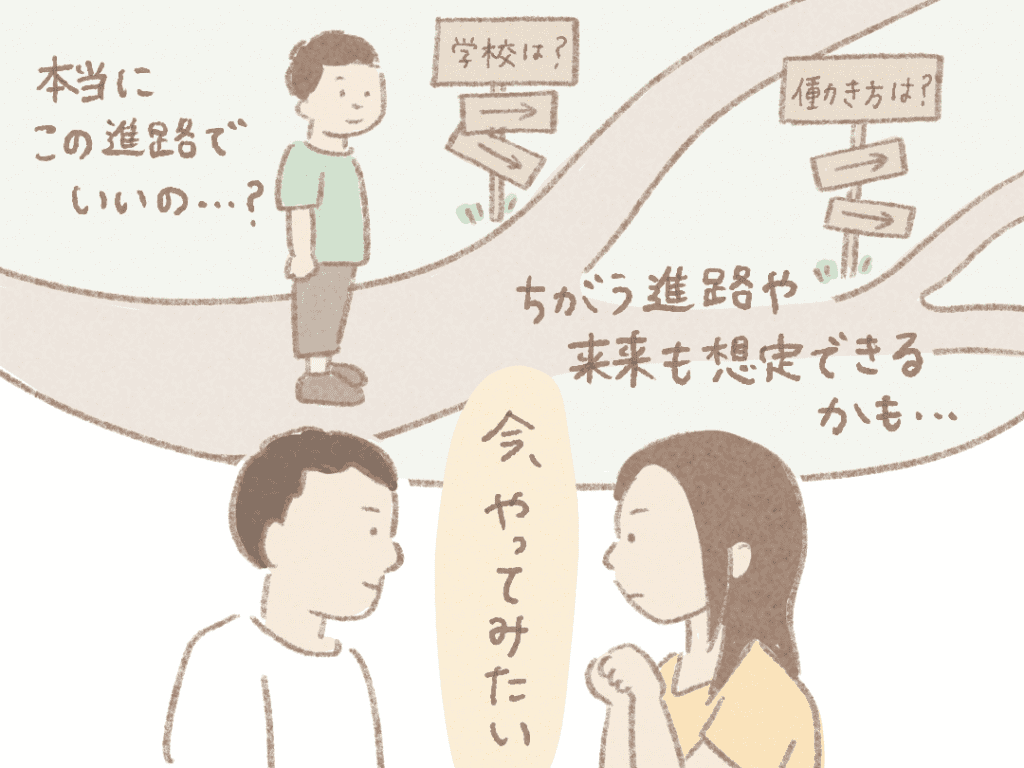
The time when I was considering whether or not to do the test was also the time when I was thinking about my career path after elementary school.
My wife and I envisioned a career path for our oldest son, “Is this really what we want?” I spent days thinking about such things.
The tests and transplants may calm and change their emotional state, and they may be able to envision a different career path and future than the one they have now.
That is why I wanted to “do what I can do now without putting it off” at this critical juncture.
I would rather make a move at this point in time, rather than dilly-dallying over what to do and then thinking, “I guess I should transplant after all” a few years later.
I thought, “If I can get what I can’t see as an extension of my current life by doing a transplant, I want to try it.
After hearing about their experiences at the seminar, they asked questions such as, “How does a transplant work?” Is there a clinic somewhere I can take her? How much does it cost?” I began to make concrete calculations such as “How does it work?
The cost of the transplant is not cheap, but I was able to explain this to my husband and get his consent.
This is how our family took the first step toward the first inspection.
About Poop Tests
My family is taking the first step toward stool transplantation.
When you apply for the intestinal flora balance test, you will first fill out a medical questionnaire and other detailed items such as your eldest son’s personality and characteristics.
The information submitted will also be used to create a custom-made stool for stool transplantation.
I understand that a stool sample is necessary to get a detailed picture of the state of the intestinal tract! I understand that, but considering my son’s characteristics, I thought, “It seems like a hurdle to take a stool sample! I thought.
In fact, my eldest son refused to show his poop to Mommy at all costs, as expected!
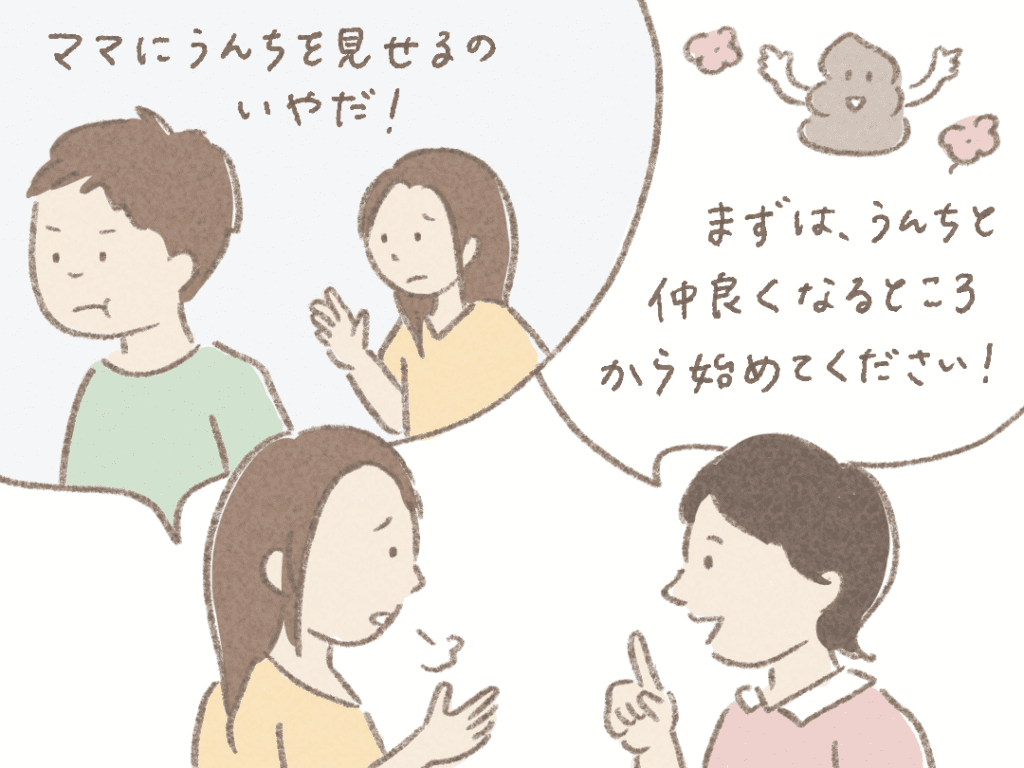
When I talked to the institute about my son’s refusal to have a stool sample taken
“Start by getting to know your poop. Poo is not dirty, it tells you what’s going on with your body, it’s important!”
Please keep telling him that. He asked me to speak to them.
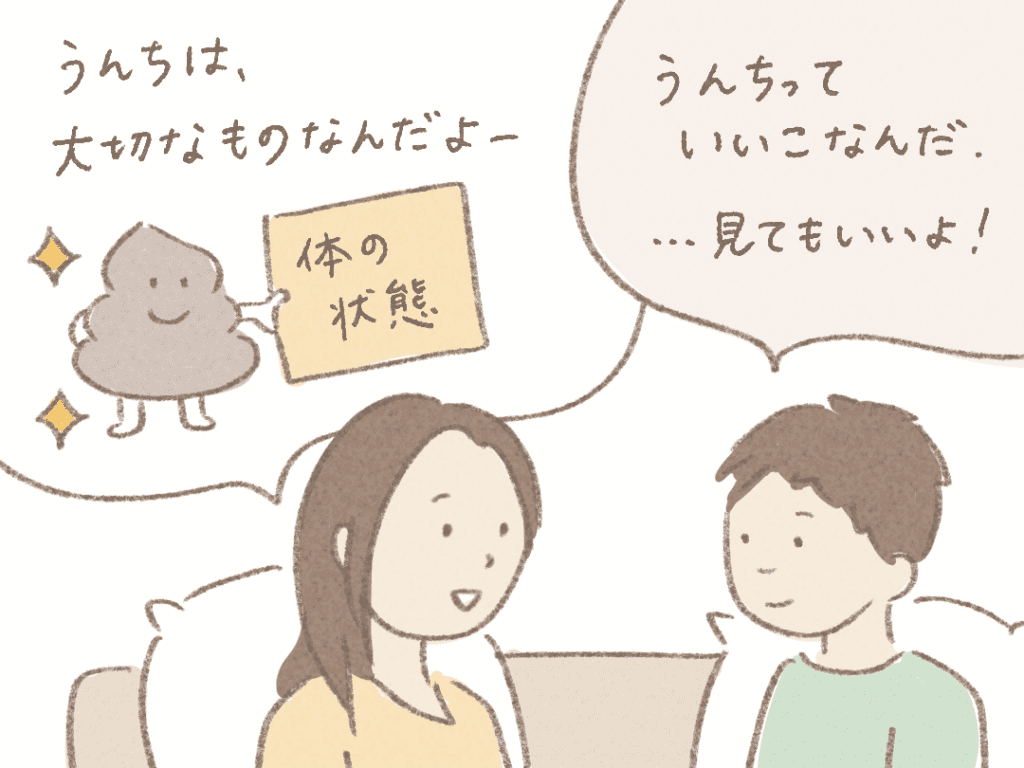
When you start talking about poop consciously in the family, little by little, you will be able to say, “Poop is not a dirty thing. It’s a good thing.” Finally, my son gave me his consent to take a bowel movement, saying, “If Mommy wants to look at it, I can.
At that point, I told him, “Well, next time you’re about to poop, let me know. Mom wants to send your poop to the hospital to see how well you are doing,” I told her.
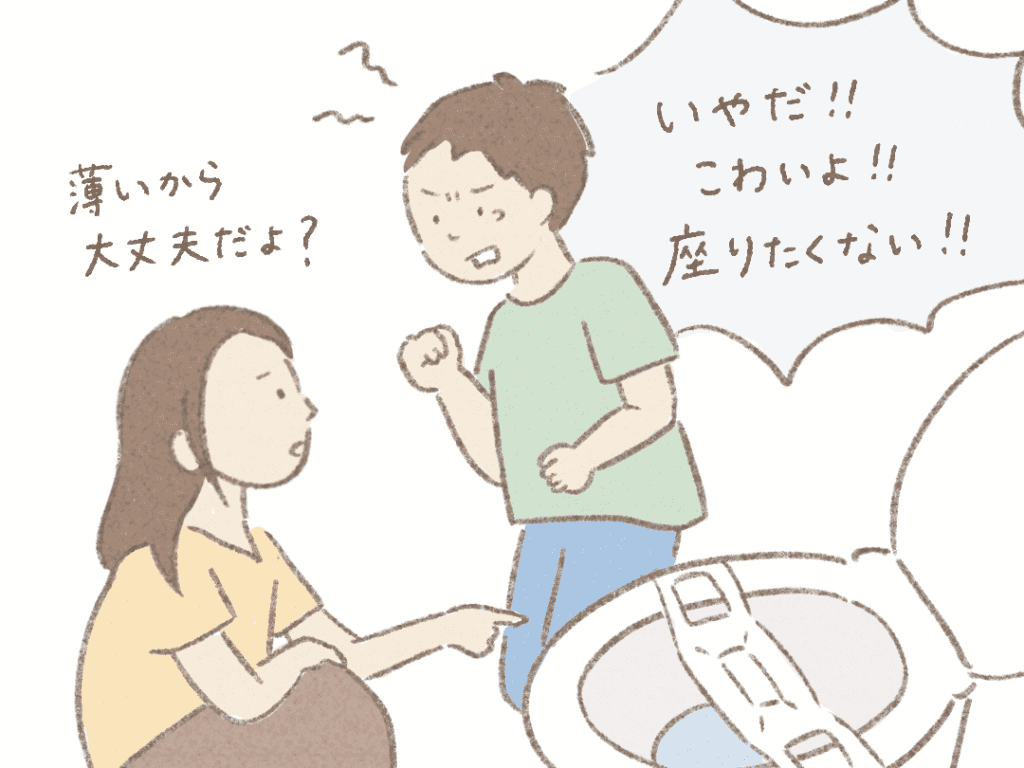
Finally, it was time to collect the stools.
My oldest son tells me on a holiday morning that he wants to “poop”.
I’ve got it!” I was so motivated that I went into the bathroom with him with a stool collection kit in my hand.
But when it comes time to install the stool collection sheet in the toilet bowl, “No! What is this? I’m scared. I don’t want to sit on it. I don’t want to sit on it. and refused for less than 30 minutes.
I’ll just sit down.” “Absolutely not. I’m just going to sit down.” “Absolutely not. !!!! Repeatedly.
Eventually, the urge to urinate became unbearable and my son reluctantly sat on the toilet seat.

But once he sat down, he found that he, too, felt no discomfort at all in his buttocks.
“I’m fine.”
and was able to poop out with ease.
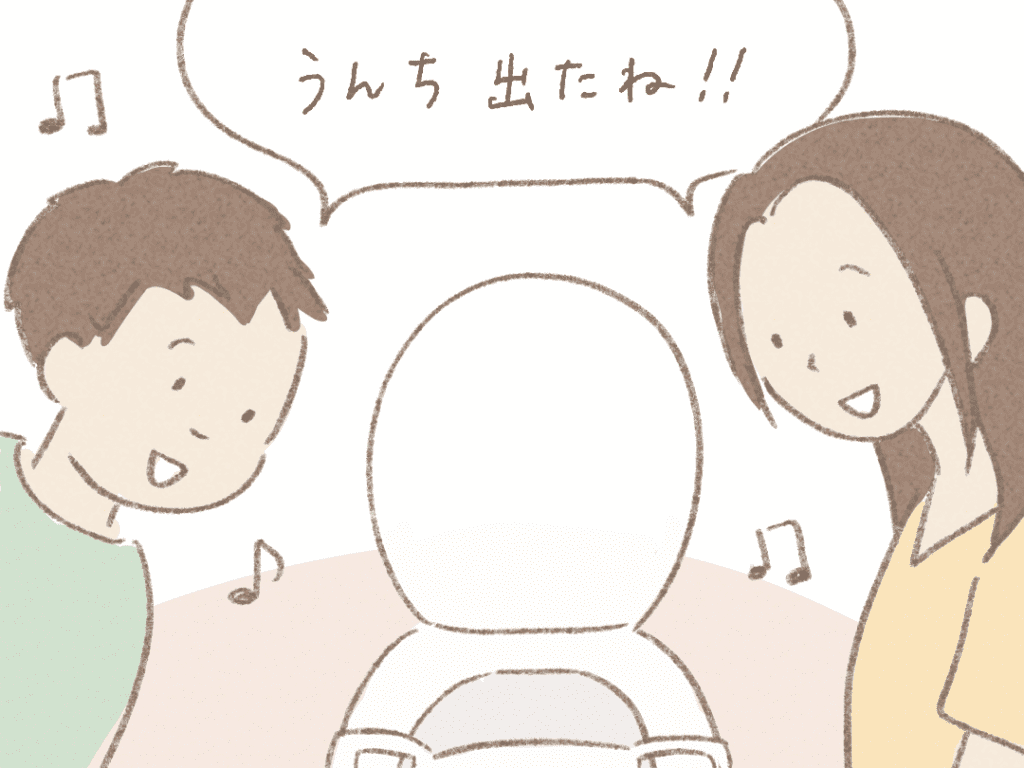
From there, he suddenly became very excited and curious.
We both peeked at the poo and chuckled, “Poo, it came out!
All that’s left is for me to collect the poop with my stool collection kit and ship it to the Intestinal Flora Transplant Clinical Institute by the day after the stool collection, and that’s it!
There was some push and shove in the bathroom, but once it was over, it seemed to go by very quickly.
He is relieved to hear that once he has experienced it once, he will be fine the next time.
I was able to successfully complete the stool collection, which at first seemed like such a hurdle.
Going to the clinic for the first time
I sent in the first stool collection kit, and a short time later, I received a call from the hospital saying that the test results were in and that I should come with my son.
Along with the excitement of knowing the test results, I began to wonder if my oldest son, who hates hospitals, would be able to stay calm in the hospital.

What kind of hospital is it? Will my son hate it?
With such anxious thoughts, I looked at the medical record entry form that I received from the hospital. However, when I saw the contents, I thought, “Oh, I may be all right.
There were many columns there for us to write down things we wanted our eldest son to be aware of and respond to during his stay in the hospital, and we could feel the hospital’s concern for him.

For example, about distance.
My oldest son does not want me to talk to him or approach him when he is nervous. It seems that when he is nervous, the very act of being approached is a burden, no matter how much the other person smiles.
‘He is likely to be nervous immediately after entering the hospital, so please do not speak to my son until he has calmed down.”
“Please do not get too close to him, but keep a little distance.”
“Please speak to me first. If my son is a little calmer at that time and you feel you can make contact, I will prompt you and you can communicate directly with him.”
It was a great relief for me to be able to communicate with them well in advance, such as
Then, on the day we were going to the hospital. I told him, “The doctor looked at my poop and found out a lot of things, so let’s go ask him together,” and drove to the hospital.
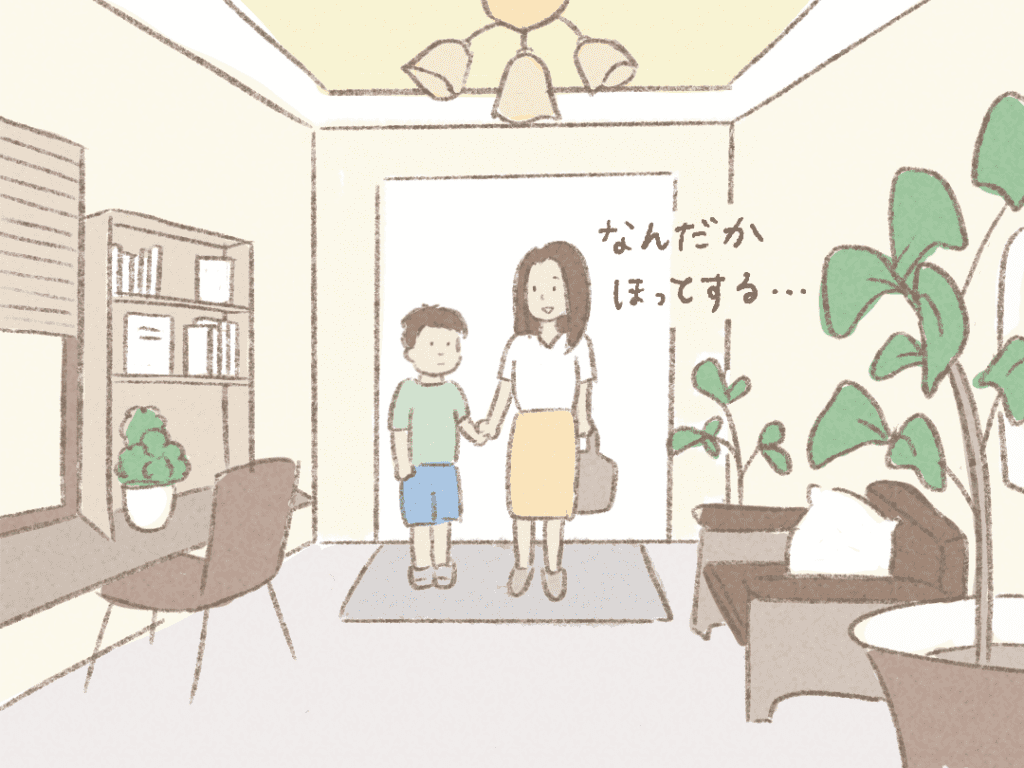
My oldest son got into the car in a good mood and we were on our way, but when we got out of the car and saw the hospital in front of us, he was scared and his feet stopped moving. We took our time and entered the hospital with trepidation.
However, the moment I stepped inside the hospital, I was surprised. There was no inorganic hospital atmosphere that I had imagined, and the waiting room had a very warm atmosphere, which I remember feeling somewhat relieved.
And I was reassured that what I had asked for in advance had been followed, and that the hospital was “accustomed to dealing with children with developmental disabilities.
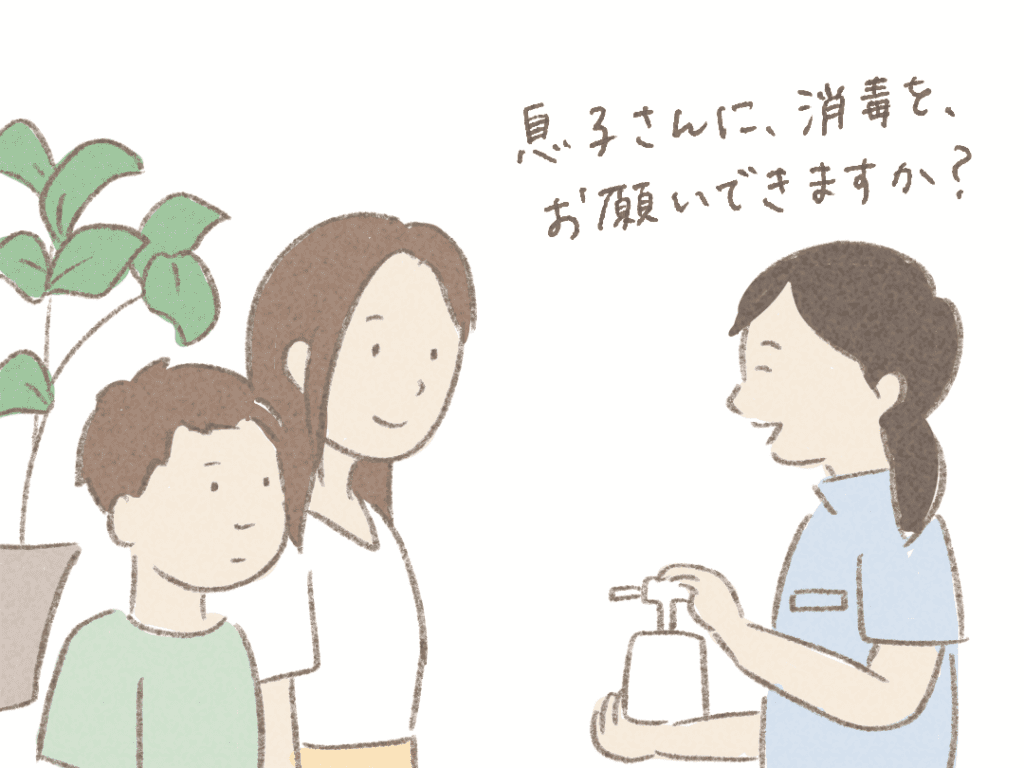
For example, when I was disinfecting his hands with alcohol, he did not say directly to my eldest son, but to me, “Could you ask your son to disinfect?” She did not ignore my eldest son. She was not ignoring my eldest son, but rather, she was watching him and smiling at him as she responded to his needs.
My eldest son, although nervous, is very aware of what is going on around him. Therefore, if he was completely ignored, it would make him feel uncomfortable, but after a while he seemed to understand that the people in this place were properly looking at him in a positive way.
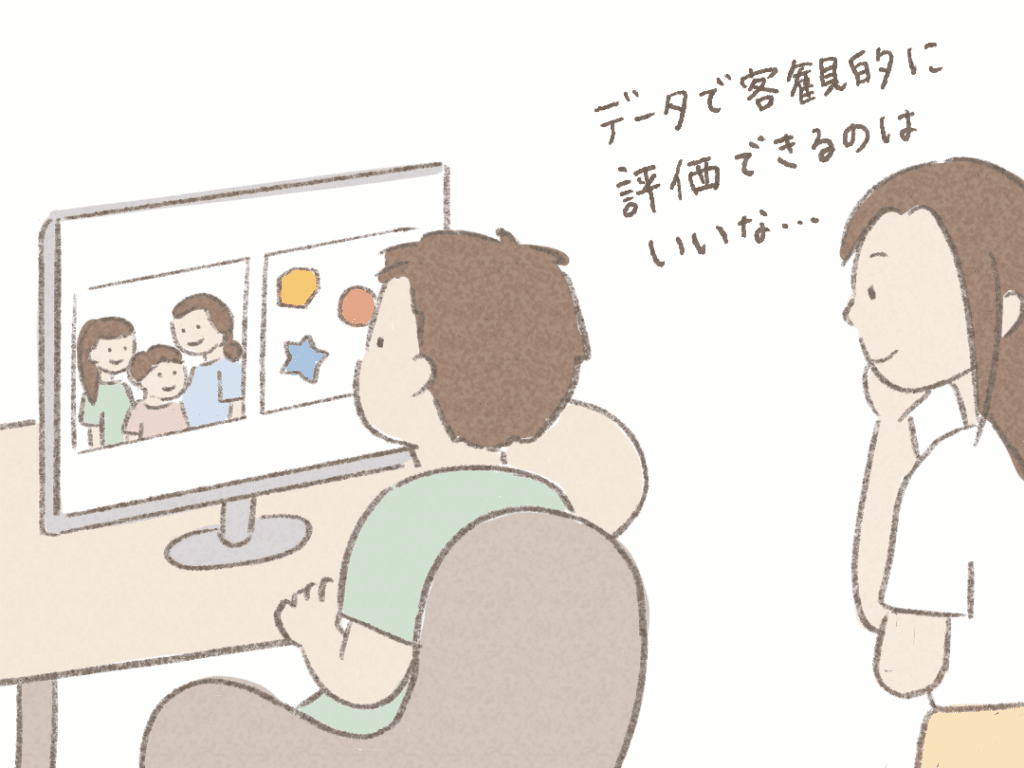
Before hearing the results of the stool sample, there was an examination using a device called a “gain’s finder.
This is a device that measures eye movement based on data on where on the screen a person looks for how many seconds through pictures of people and inorganic illustrations of moving figures projected on a monitor.
This test allows us to objectively evaluate the current status and interests of children with autistic tendencies. I found this method of accurately understanding my eldest son’s situation based on objective data to be refreshing, and I was pleased to feel that it would help me understand more about my son.
Finally, after the gain’s finder test, the doctor will ask for the results of the stool sample in detail.
Ask about test results and stool transplants.
After completing the Gain’s Finder test, the doctor told me the results of my oldest son’s stool test.

He carefully explained each of the data one by one while looking at the vast amount of flora balance data presented in colorful colored graphs. I was amazed, “How can you know all this just by examining stools?” I was just amazed.
In the case of my oldest son, there is a diversity of bacteria. At the same time, we learned that there are many bacteria that suppress aggression, or inflammation, so to speak, which is said to be common in autistic children. Based on what we learned from the test results, we were also given advice on what foods we should be conscious of eating.
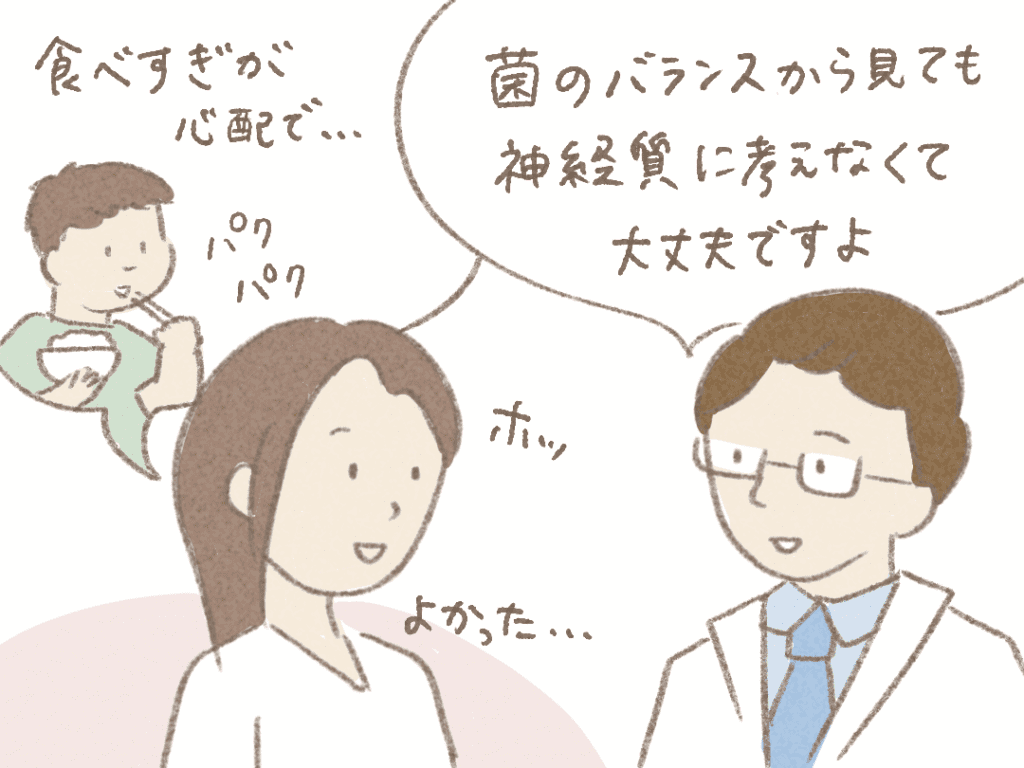
“Do you have any problems with your eating habits?” He asked me if I thought my oldest son was eating too much and eating too little. I asked him if he was eating too much.
I was then relieved to hear him say, “There is no need to be so nervous about it because of the condition and diversity of the bacteria. I was impressed when the doctor said, “We have learned a lot from the tests, so let’s work together on what we can do from here.” I could tell that he was seriously thinking about how to make life easier for my oldest son. We were then given a detailed explanation of the stool transplant process, its details, and costs.
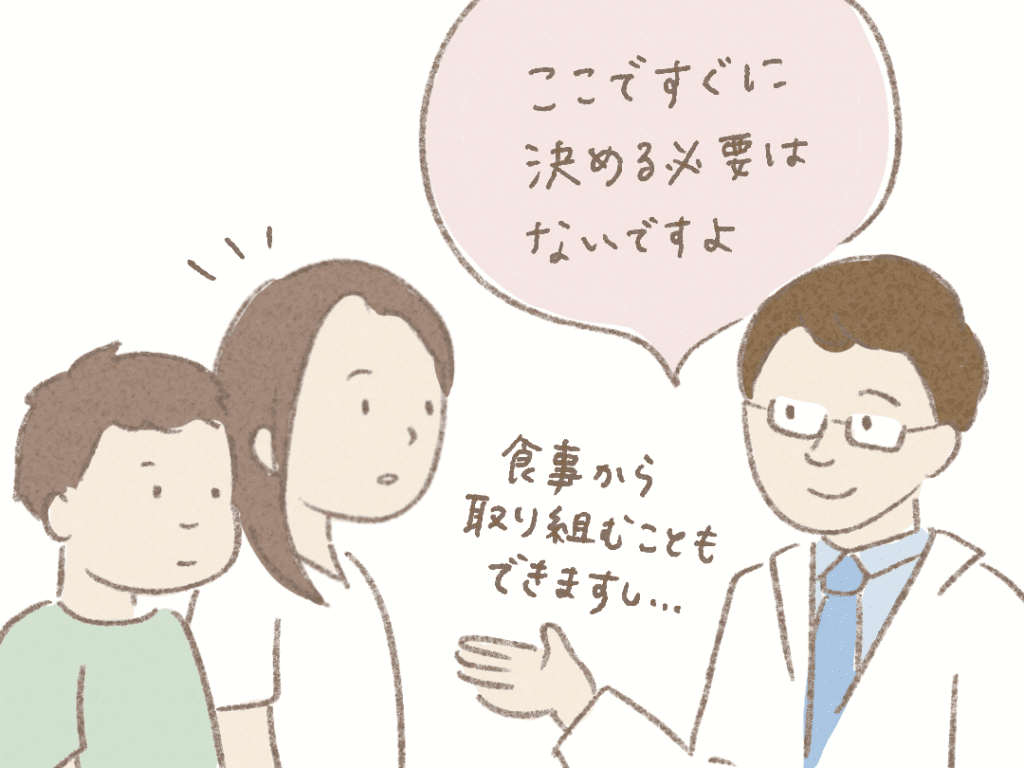
The doctor told me that there was no need to decide at this moment whether or not to do a stool transplant, and that I could respond after discussing it with my family.
I was also impressed by the fact that instead of proceeding with the discussion with a stool transplant, he told me, “If you are worried about a stool transplant, it may take some time, but we can change the condition of your intestines by effectively taking foods that are good for the intestines,”
and he said, “If you have any concerns, please ask me anything. Please come as many times as you want. We will give you answers to everything.” I was reassured by these words.
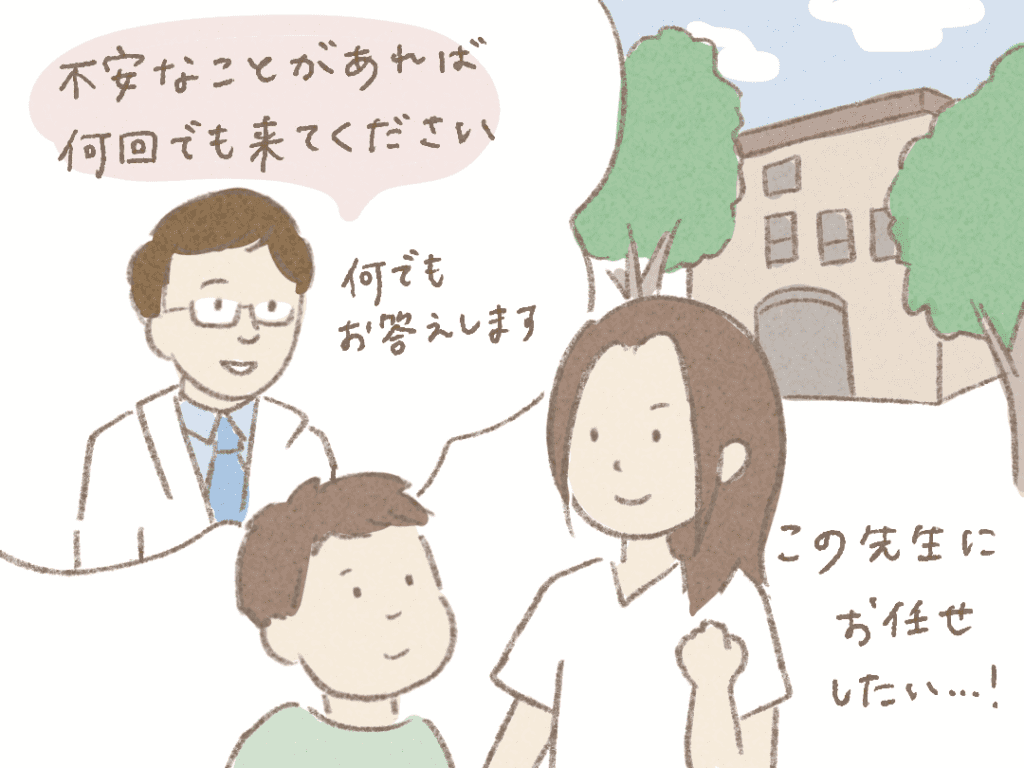
Fecal transplantation is still not well known in Japan, and there are many aspects that I cannot imagine. That is why, through the hospital visits, “Can I trust this doctor?” was an important point for me. From this point of view, the doctor’s stories were convincing and reassuring, and I was able to think, “I want to entrust this doctor to my care.
After hearing all you have to say, I would like to request a stool transplant. I would like to work on it with my son. I felt strongly that I would like to work on it with my son.
The stool transplant will begin at my next visit to the hospital. Therefore, it was important for me to be able to confirm and resolve all my concerns beforehand on this day.
Transplanting intestinal bacteria (flora) for the first time
After deciding to have a stool transplant and completing the paperwork and other procedures, the day of the stool transplant was finally approaching.
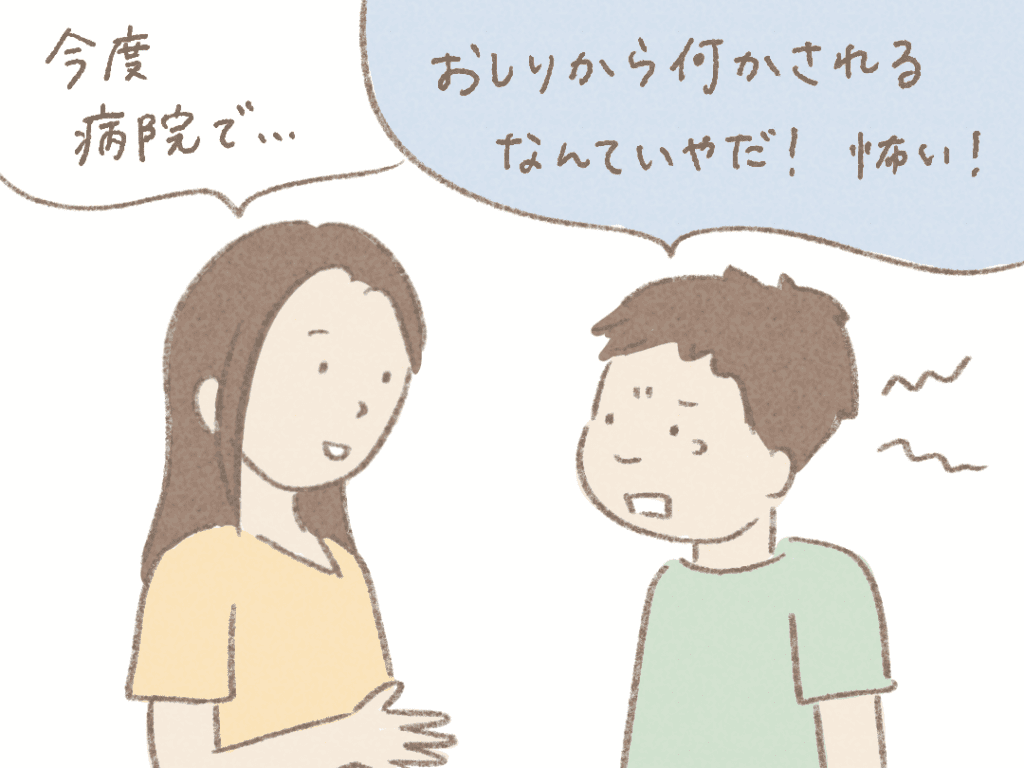
Since this time was different from the previous visits to the hospital, which were only for a simple examination, I decided to inform my eldest son about the stool transplant in advance before taking him to the hospital, and explained to him about the stool transplant in carefully chosen words. However, this made my eldest son anxious. He said, “They are going to do something to my buttocks. I’m scared! He refused to go to the hospital at all costs.
On the day of the hospital visit, I managed to persuade my son to come to the hospital, but he sat at the entrance for 20 minutes and said, “I’m scared. I don’t want to go into the hospital.” I managed to get my son into the waiting room after coaxing him out with all kinds of tricks.

The nurses were smiling at my eldest son, who was clearly nervous with his whole body tense, and at me, who was filled with anxiety at the sight of him, as if they were used to dealing with me.
My eldest son was allowed into the waiting room but stubbornly refused to move from there. The nurse who took care of my son at his last visit brought a blood pressure cuff from the examination room. While we were enjoying talking in the waiting room and taking blood pressure readings, my son’s nervousness gradually eased and he began to smile a little. The nurse slowly guided us to the treatment room while slowly observing the changes in my eldest son.
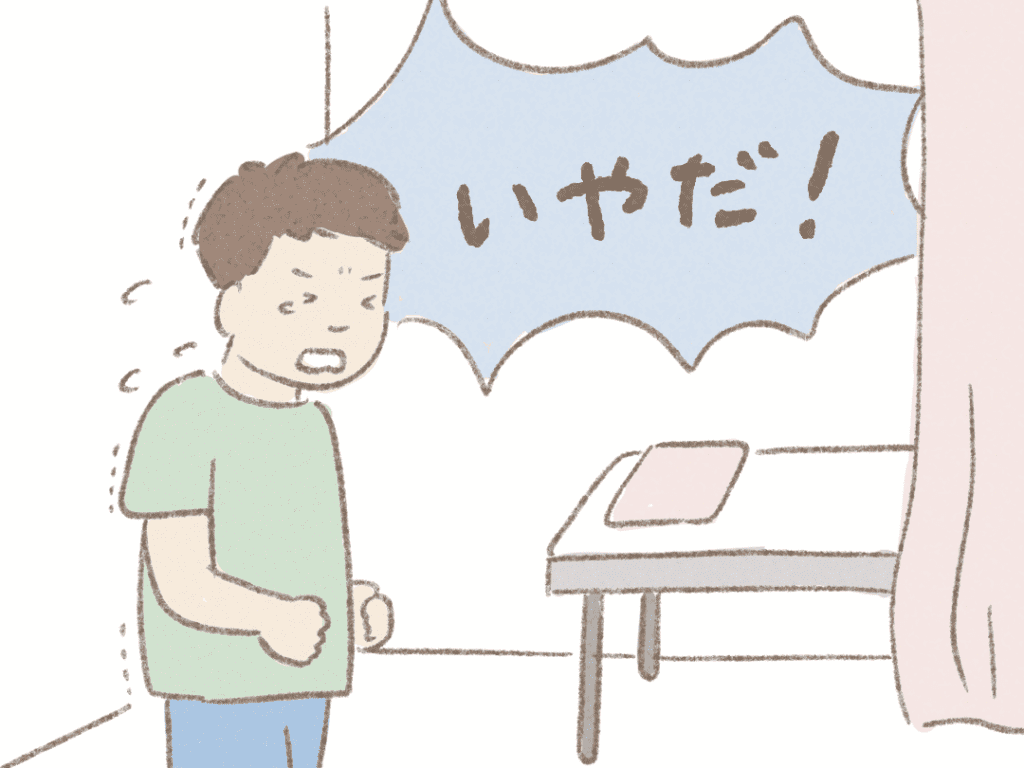
He was able to move to the treatment room, but when he finally saw the bed in front of him, his eldest son became teary-eyed and tried to run away from the room.
Again, I spent a lot of time trying to persuade my oldest son, but he kept saying, “No! I could not get him to relax.
Based on his condition, the doctor and nurses decided that it would be difficult for my eldest son to undergo the procedure willingly, so we decided to put him on the bed and perform a stool transplant, even by force, when the timing was right.
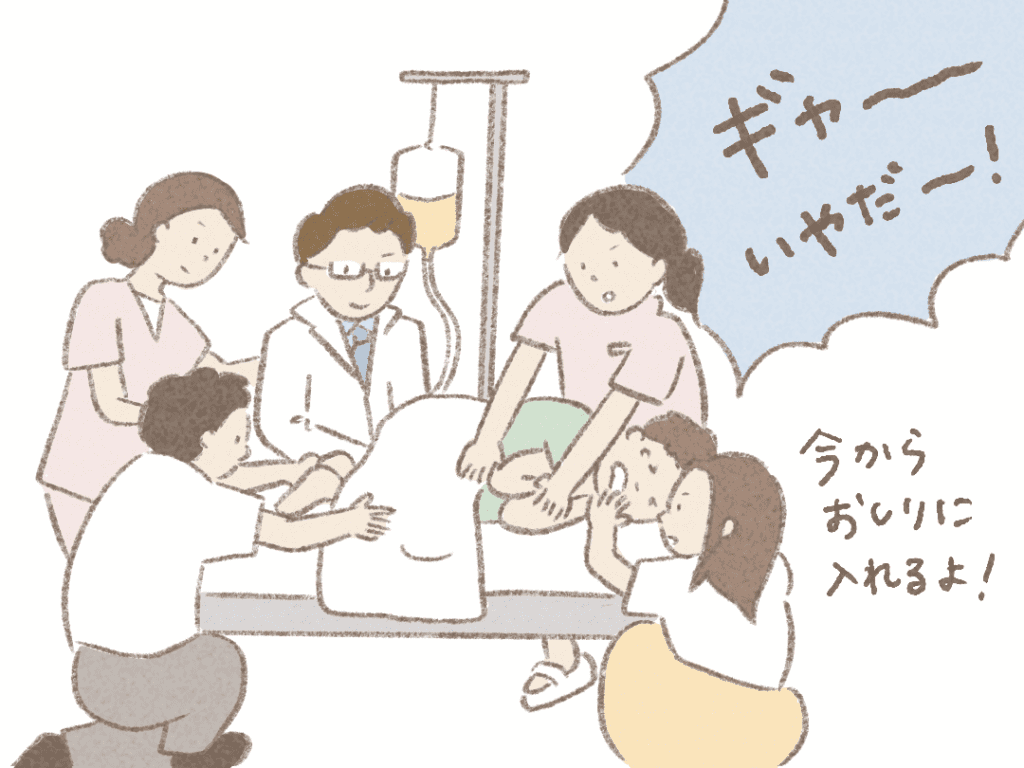
Looking back now, I think it was a really quick team effort. At the very moment my oldest son suddenly sat down on the treatment bed, I put him down on the bed, held him down and said, “I’m going to put it in your butt now!” and I decided to do the stool transplant.
Naturally, he was startled and cried out loudly, but the three adults held him down for a couple of minutes and decided to go through with it.
The stool for transplantation is diluted with a special liquid and comes in a kind of drip packet. A soft rubber tube is attached to the end of the tube that leads from the pack containing the brown liquid, and the soft rubber tube is placed in the buttocks.
It sounds like a big deal when you hear the word “transplant,” but if the procedure went smoothly, it took less than two minutes.
Perhaps in the case of my oldest son, it was not so much the pain, but the fear of having something done to his buttocks that caused him to panic and cry a lot. Another parent whose child actually had a stool transplant told us, “My child was lying on the bed watching a video on the tablet, and it was over in a flash and he was smiling.” She told us, “My child was lying on the bed watching the video on the tablet and was smiling after the transplant.

By the way, once the stool transplant was finished, my oldest son was fine, as if it were a lie that he had been crying and screaming earlier. He described his hips as “a little fidgety,” but an hour later he was smiling and saying, “My hips are fine now.
The stool transplant is not a one-time procedure, but rather a series of visits to the hospital over a period of time. My eldest son was very violent the first time he underwent the procedure, but as time went by, he learned that it was not a painful procedure and that it would be over soon, and he was able to undergo the stool transplant calmly.
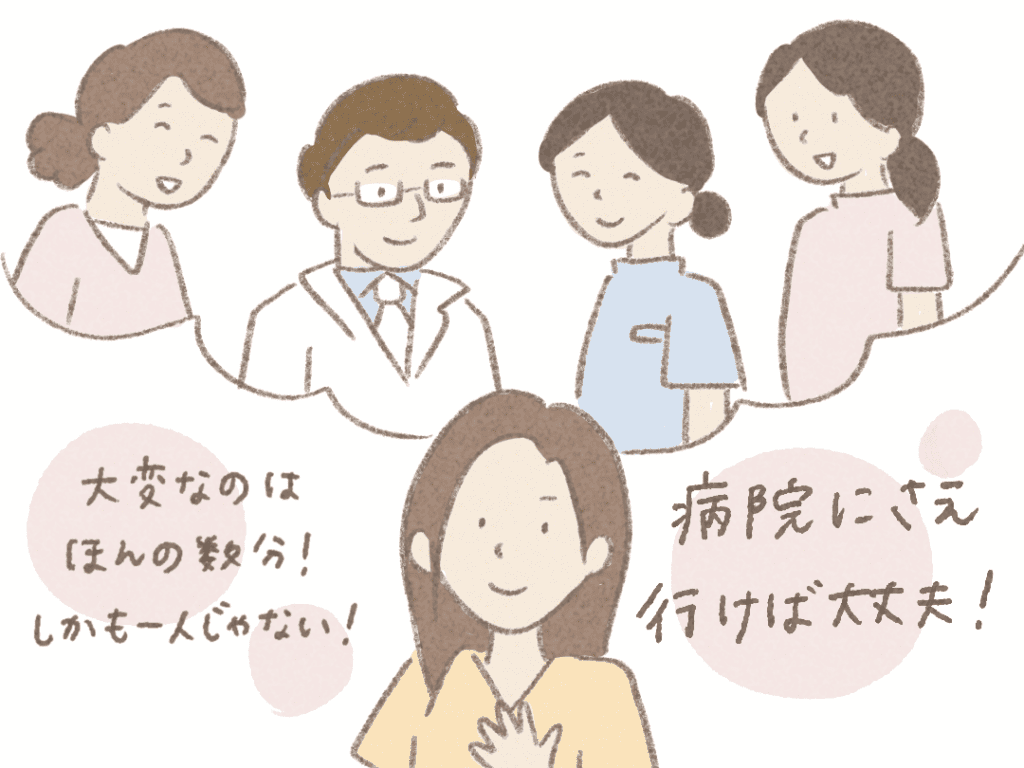
Many people think that stool transplantation itself is “too much for my child.
Our family had a really hard time the first time, but the procedure still takes only a few minutes. The hard part is only a few minutes. The doctors and nurses will do their best to help you during those few minutes.
Every time I went to the hospital with my son, I said to myself, “If I can go to the hospital anyway, the doctors will help me!” I told myself that I would be fine.

And this was the morning after the first stool transplant.
Usually my oldest son is the first to get up, turn on the TV, watch cartoons and wait for me to wake up, but on this particular day I couldn’t hear the TV from the first floor.
What’s that?” Is he still sleeping?” I headed for the living room and found him at his desk, in a good mood, doing line-connecting printouts for school. I was really surprised to see something I had never seen before. From this point on, many changes occurred that I had never seen before.
ALONG WITH THE STOOL TRANSPLANT, THE SRS-2 (INTERPERSONAL RESPONSIVENESS SCALE) CHECK SHEET IS COMPLETED. THROUGH THIS CHECKLIST, WE CAN CLOSELY MONITOR THE CHILD’S CHANGES.
For example, the questionnaire asks questions such as, “Compared to when he/she is alone, when he/she is with someone else, he/she seems more fidgety and restless. Through these 65 questions, you can objectively reflect on the changes in your child.

After completing all the stool transplants, I once again feel that it was a good thing that we took the plunge and had the stool transplants done at the right time. My son has undergone various happy changes through the stool transplants, and at the same time, I feel that his daily words and actions have become calmer.
When he gets frustrated and throws a tantrum, it is hard for the parents to deal with it, but I am sure it was the hardest thing for him to deal with. When I think about it, I think that now he is able to face his studies and daily life in a calm and easy way.
I hope that the bacteria as a cheering group in my eldest son’s belly will continue to live on in good health, and I will look forward to spending time with him as he grows up in the future.
Changes after transplantation
Less gonads before taking a bath.

I said, “Hey, what’s going on? Maybe things have calmed down a bit?”
After the transplant, the first thing I felt was that I was able to change my mind before taking a bath.
My oldest son used to have a hard time moving from eating dinner to taking a bath.
I was often frustrated by it.
However, I noticed a significant reduction in that stress after about the second transplant.
Although they may be saying, “Bath time is a hassle,” they are less likely to yell, “I’m not going in there! and throwing toys at hand, as they used to do before, have decreased.
He would say, “No,” but more often than not, after a proper conversation, he would say, “Okay,” and quickly go to the bathroom on his own.
Bath time, which used to be so difficult, somehow no longer seemed “very difficult.
I thought, “Maybe daily life is getting a little easier.” After the transplant, I felt my oldest son changing at a rate I had never seen before.
Recreate dessert time after bath

(the first half of stool transplantation)
It is our family custom to eat cold grapes together after taking a bath.
Usually I divide the food for the number of people on a plate and serve it, but one day while I was washing up in the bath, my oldest son said, “Get out of the bath first and I’ll do it.
I was surprised because this had never happened before, but I let my oldest son out of the bath first, as if to say, “If you want to do it, do it.
I got out of the bath, looked at the table, and lo and behold! The usual desserts had been prepared more perfectly than I had imagined.
The grapes had just been bought and were in a pack, so they needed to be washed first.
When it was time to get out of the bath, I told my oldest son, “Wash the grapes,” but I wondered inwardly what he would do.
(After all, I was afraid he wouldn’t know the procedure for washing them and would say, “Mama, I couldn’t do it.”)
However, my oldest son took the grapes out of the pack, washed them using a colander, and divided them into plates for the number of people.
The rest of the grapes were returned to the refrigerator.
I also noticed that he had chosen only plastic plates for his third son.
He proudly said to me, “K-kun’s (third son’s) plate, it won’t break.
My eldest son, who had been unable to perform a series of tasks in the past, was able to recreate our family’s dessert time with great success. It was an experience that made me think, “He has understood so many things so far.
The hero show helped me change my mind.
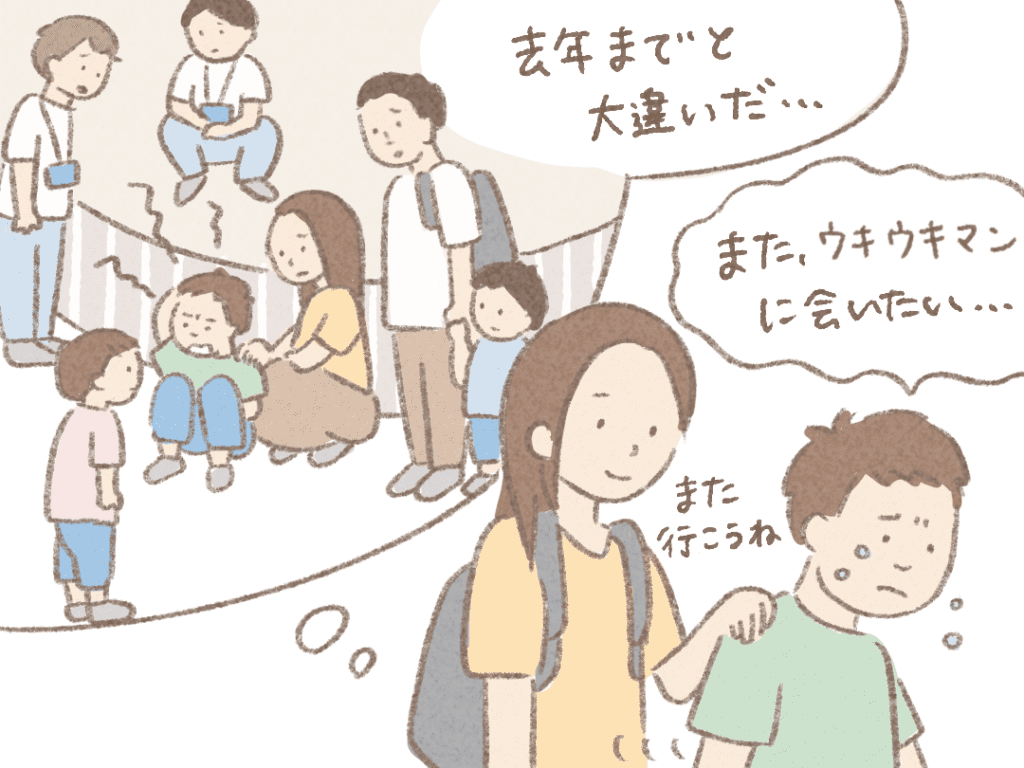
This spring I often went to the Ultraman and Kamen Rider shows.
After the show, my eldest son was always in a state of excitement and went on a rampage, saying, “I don’t want to go home.
I had to be helped by a few attendants to leave the venue and finally get out, but this spring I had no trouble with my oldest son at any of the venues.
When the show ended, I was so sad that I was able to move on my own feet, shedding tears and saying, “I want to see Ultraman again.
I want to see more of my heroes, but I know in my head that I need to move on now.
I felt the conflict in my oldest son’s mind.
In the past, my husband and I were tired just by taking them to a hero show.
This spring, however, I felt “I don’t mind at all if it’s just this much work.”
I think this is thanks to the change in our oldest son.
Sports Day Relay

This year’s athletic meet was particularly interesting for the changes in my eldest son.
Until last year, in the relay, he said he couldn’t run, ran only half the distance of everyone else, and passed the baton to the next kid.
The next runner after the eldest son was the one with the fastest legs, and he would run 1.5 times as fast as the eldest son.
But he still can’t run well, so the relay was hard for him.
I can’t run. I’m too slow. I don’t want to.
But lo and behold, for the first time this year I got to run the same distance as everyone else!
I’m not fast by any means, and I do get passed, but from my perspective, I thought, “This is so different from what I used to look like!” I thought, “This is totally different from what I have seen in the past!”
I could feel that he was trying his best not to be overtaken.
He’s running just like everyone else and passing the baton well!”
I was so moved to see my son running so hard that tears started to fall.
*The experience and changes caused by transplantation vary from person to person. Hatanaka’s experience and other information are distributed in “Roundtable Discussion with Loose Fungi”.









